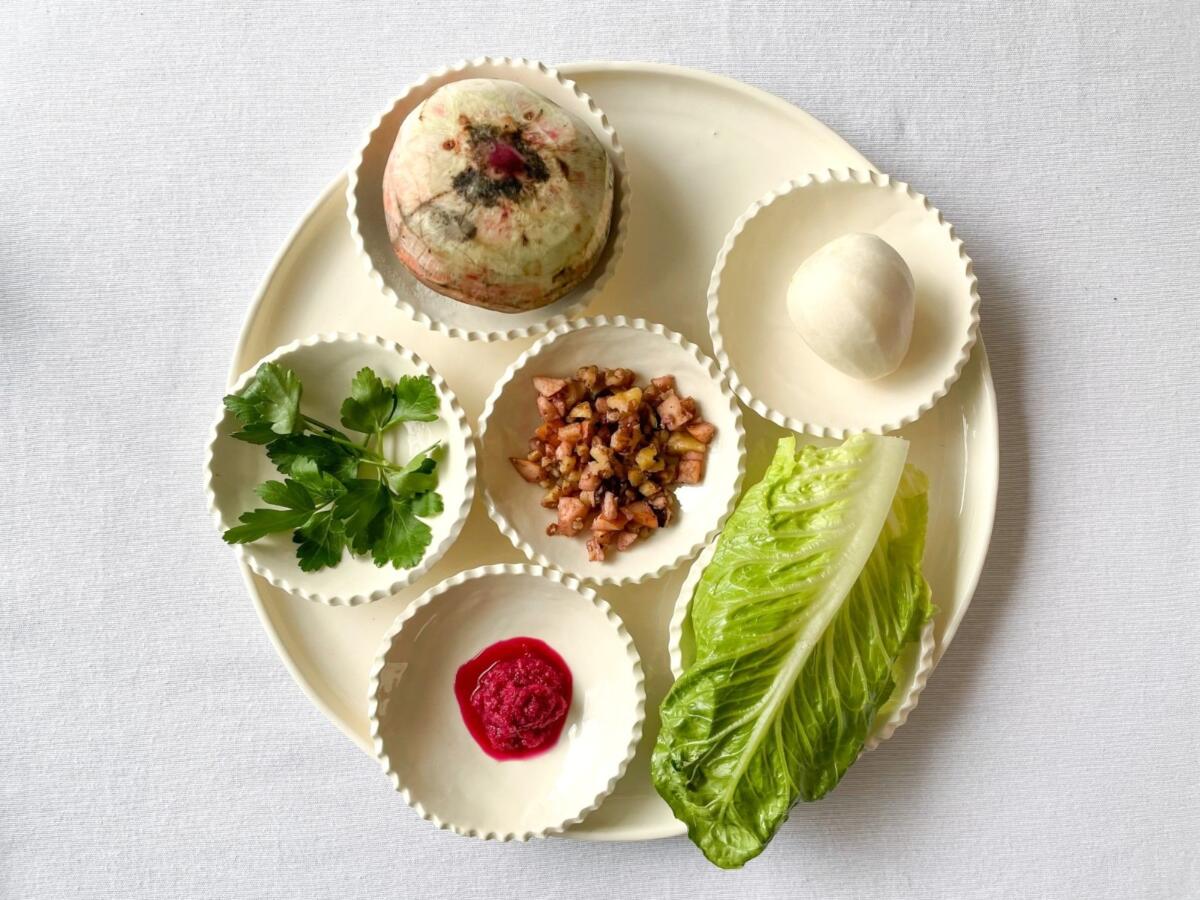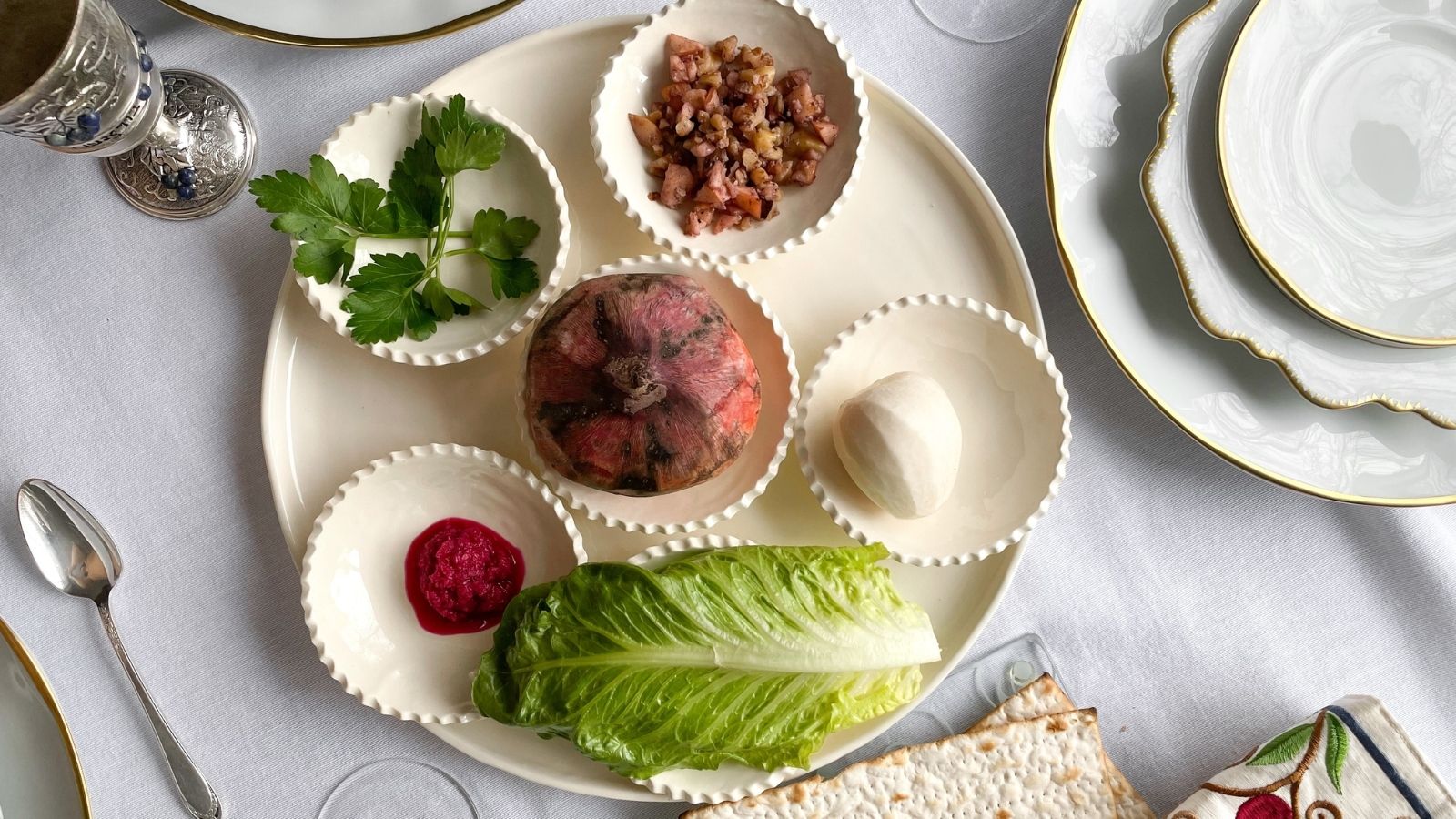On the surface, Passover seems like a tough holiday to veganize. I am specifically thinking about the brisket, matzah ball soup and an actual bone on the table, just to name a few. So, how might the vegan-minded Jewish folk prepare for this observance in a way that feels traditional without all of the classic meat and egg elements?
Let’s look at the most traditional item on the table: the seder plate. Each piece of the seder plate helps us tell a piece of the story of Passover. Let’s look at what is traditionally found on it, what might already be animal-friendly, and then explore vegan-options that will keep the symbolism. A traditional seder plate is already two-thirds vegan-friendly, so with just a few adjustments, the Jewish vegans of the world can observe this incredible holiday without “sacrificing” their values.

Karpas
Karpas is a green leafy vegetable used to symbolize the way the Israelites flourished when they were first in Egypt, before they were enslaved. Parsley is often used as the karpas, and is also what is dipped in salt water during the seder. If the words “green leafy vegetable” did not give it away already, karpas is already vegan!
Haroset
The sweetest smelling seder plate item, haroset symbolizes the mortar used by the Israelites when they were forced to build in Egypt. Made of chopped fruits and nuts, most haroset recipes are automatically vegan. However, some recipes call for sweeteners like honey, so make sure to omit or substitute for a vegan-friendly option, like agave or date syrup.
The Nosher celebrates the traditions and recipes that have brought Jews together for centuries. Donate today to keep The Nosher's stories and recipes accessible to all.
Maror
Maror, or bitter herbs, symbolize the bitterness of slavery — easy to remember! This is also an easy seder item for vegans as, you guessed it, herbs are already vegan. Horseradish (whole or from a jar) is the common bitter herb choice today — and either way, it is a vegan-friendly option.
Hazaret
If you did not get enough from the first bitter herb, you are in luck because hazaret is the second bitter herb. Those who include the second bitter herb often choose romaine lettuce, a much tamer bitterness compared to horseradish. If you include this on your seder plate, it is another safe vegan option.
Zeroa
Traditionally, zeroa would be roasted lamb shank bone. This serves as a visual reminder of the sacrifice performed by the Israelites. This would be hard to make a bone vegan, but fortunately there is a great substitute. A roasted beet is the perfect zeroa for two reasons. First, it evokes similar imagery to a roasted bone, with the red and white naturally found in beets, and second, it is an accepted substitute according to Jewish law — a true win-win for vegans.
Beitzah
Last but not least: the egg, or beitzah in Hebrew. This seder plate item’s round shape reminds us of the cycle of life and rebirth, perfect for springtime renewal. With no way to make an egg vegan, and the name literally meaning “egg” it might feel like a stretch to replace it altogether. But fret not, there are a few great options to help give the same visual reminder without the egg itself. For roundness, an avocado pit, white eggplant, or even a chive bulb could all make great substitutes. A great option for the closest look-alike, a small peeled white radish will allow your vegan seder plate to appear like its traditional counterpart. Finally, for a beautiful, springtime replacement, try a white flower. A tulip makes the perfect round shape while also serving as a reminder of the renewal of the season.



